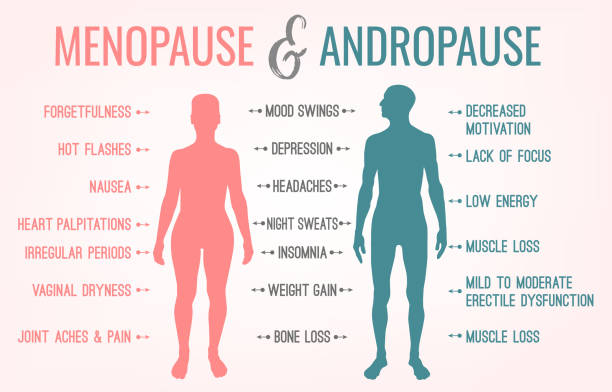
Exercise benefits on menopause and andropause
As we age, our bodies undergo various changes that can bring about a range of symptoms.
For women, menopause marks the end of the reproductive phase, while andropause refers to the decline in testosterone levels in men.
Both menopause and andropause can lead to symptoms such as hot flashes, night sweats, decreased energy levels, and mood swings, among others.
However, there’s good news! Exercise and healthy lifestyle choices can play a crucial role in mitigating these symptoms and improving overall health. Here’s why:
1. Helps regulate hormones:
Regular exercise has been shown to increase the production of endorphins, which are natural painkillers and mood boosters. Additionally, exercise has been shown to regulate hormones and reduce the severity of symptoms associated with both menopause and andropause.
2. Maintains bone density:
Osteoporosis is a common concern for women during menopause, and weight-bearing exercises can help maintain bone density and prevent the onset of osteoporosis. For men, regular exercise can also help slow down the decline in testosterone levels and reduce the risk of developing osteoporosis.
3. Improves sleep quality:
Insomnia and disrupted sleep are common complaints during menopause and andropause. Exercise, especially aerobic exercise, has been shown to improve sleep quality, which can help alleviate symptoms of fatigue and irritability.
4. Promotes weight control:
As we age, it becomes more difficult to maintain a healthy weight. Exercise and a balanced diet can help control weight and prevent obesity, which is a risk factor for various chronic conditions such as heart disease and type 2 diabetes.
5. Boosts mood:
During menopause and andropause, changes in hormones can lead to mood swings and depression. Exercise has been shown to boost mood, reduce stress, and improve overall mental health.
Here are some eating habits that can help elevate the positive effects of exercise and provide additional symptom relief during menopause and andropause:

Menopause and andropause. Men and women sexual health. Main symptoms and causes.
1. Incorporate a variety of colorful fruits and vegetables:
Eating a diet rich in fruits and vegetables can provide essential vitamins, minerals, and antioxidants, which can help reduce the risk of chronic diseases and improve overall health.
2. Choose whole grains:
Whole grains are a rich source of fiber, which can help regulate digestion and prevent constipation. They also provide sustained energy and can help maintain a healthy weight.
3. Opt for lean protein sources:
Lean protein sources, such as chicken, fish, beans, and tofu, can help repair and rebuild muscle tissue, and provide essential amino acids for hormone production.
4. Limit processed and high-fat foods:
Processed and high-fat foods are typically high in calories and can contribute to weight gain, as well as increase the risk of chronic diseases such as heart disease and type 2 diabetes.
5. Hydrate with water:
Staying hydrated is essential for overall health and can help alleviate symptoms of hot flashes and night sweats during menopause.
6. Consider phytoestrogen-rich foods:
During menopause, estrogen levels decline, and some women may benefit from incorporating phytoestrogen-rich foods, such as soybeans, tofu, and flaxseeds, into their diets.
7. Limit alcohol and caffeine:
Alcohol and caffeine can disrupt sleep patterns and exacerbate symptoms of hot flashes, mood swings, and anxiety.
In conclusion, exercise and healthy lifestyle choices are crucial for managing the symptoms associated with menopause and andropause. Incorporating regular exercise into your routine, along with a balanced diet, can go a long way in maintaining overall health and well-being. Consult with your healthcare provider before starting any new exercise program to ensure it’s safe and appropriate for you.



